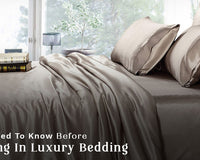Are allergies keeping you awake at night? You’re not alone. Millions of people across the UK struggle with sneezing, itching, and congestion as soon as their head hits the pillow. The culprit often hides where you least expect it: your mattress. That’s where hypoallergenic mattress covers come to the rescue. They create a protective barrier between you and allergens, allowing you to sleep soundly and wake up refreshed. But how do they work, and which ones are worth your money? Let’s dive into this comprehensive guide, designed specifically for UK allergy sufferers.
Common Bedroom Allergens and Their Triggers
Let’s face it—your bedroom should be a sanctuary, not a source of health issues. Yet common allergens lurk in unexpected places:

-
Dust mites thrive in mattresses, pillows, and duvets, feeding on the dead skin cells that accumulate on these surfaces.
-
Pet dander clings to soft furnishings, even if your pet doesn’t sleep in your bed.
-
Pollen floats in through open windows and settles on fabrics.
-
Mould spores can grow in damp areas and release allergens into the air.
For UK homes, which often experience damp and condensation, these issues can be even more severe. That’s why investing in allergy protection is critical.
How Mattress Protectors Help Reduce Allergies?
Here’s where hypoallergenic mattress covers shine. Acting like a shield, they block allergens from escaping your mattress and entering your breathing space. Most high-quality covers are designed with tightly woven fabric that dust mites and allergens simply can’t penetrate.
Think of it like wrapping your bed in an invisible armour. Every time you wash the cover, you’re also washing away the allergens that could have triggered a reaction. Over time, this can significantly improve your sleep quality and help alleviate allergy symptoms, allowing you to breathe more easily.
Additionally, modern hypoallergenic protectors in the UK often come with added features, such as waterproofing, which prevents spills or sweat from soaking into your mattress a breeding ground for bacteria.
What Makes a Mattress Cover Hypoallergenic?
A hypoallergenic mattress protector is specially designed to block allergens like dust mites, mould, and pet dander. They achieve this through:

-
Tight-weave fabrics that prevent microscopic particles from passing through.
-
Breathable layers that keep moisture and humidity under control.
-
Chemical-free materials that don’t irritate sensitive skin or trigger asthma.
When shopping in the UK, look for products labelled as allergy tested or endorsed by organisations like Allergy UK. This ensures they’ve been independently tested to reduce allergen exposure.
Difference Between Anti-Allergy and Hypoallergenic Covers
It’s easy to confuse these terms, but they’re not quite the same.
-
Anti-allergy mattress protectors are often treated with chemicals that kill or repel allergens.
-
Hypoallergenic covers, on the other hand, focus on creating a physical barrier without chemical treatments.

For sensitive sleepers or children, hypoallergenic options are usually the safer choice. They’re gentle on skin and better for long-term use.
Materials Used in Allergy-Friendly Mattress Protectors
Materials matter more than you think. Here are the most popular fabrics used in UK hypoallergenic mattress covers:

-
Cotton with tight weave: Soft, breathable, and effective against allergens.
-
Polyurethane backing: Adds waterproofing without making the bed feel sweaty.
-
Microfibre: Affordable and good at trapping dust mites.
For eco-conscious buyers, organic cotton protectors are becoming a popular choice in the UK market. They’re gentle on the planet and your allergies.
Benefits of Hypoallergenic Mattress Protectors

Investing in a hypoallergenic mattress protector is a worthwhile investment. The truth? It can be a game-changer for anyone dealing with allergies, asthma, or even sensitive skin. Let’s explore how these protectors can transform your sleep environment.
Waterproof Mattress Protector Cover Hypoallergenic & Soft Terry Fabric |
Protection Against Dust Mites and Bed Bugs
Dust mites are tiny creatures you can’t see, but they’re the number one trigger for allergies in UK homes. They live inside your mattress, feasting on dead skin cells, and their waste particles are a significant irritant for many people. A hypoallergenic mattress protector acts as a barrier, stopping these microscopic pests from reaching the surface and affecting your breathing.
Some high-quality protectors even boast zippered encasements, which fully enclose the mattress, leaving no room for dust mites or bed bugs to hide. This is especially valuable if you live in shared housing or travel often, as it adds an extra layer of hygiene and security.
Imagine lying down each night knowing you’re not sharing your bed with thousands of tiny critters—it’s enough to make anyone sleep better.
Reducing Exposure to Pet Dander and Pollen
If you’re a pet owner, you know how difficult it is to keep animal hair and dander out of your bedroom. Even when your furry friend sleeps elsewhere, allergens can hitch a ride on your clothes or circulate in the air. A hypoallergenic mattress protector helps limit how much of this settles in your bed, giving you a fighting chance at a sneeze-free night.
For seasonal allergy sufferers, it’s also helpful against pollen. During spring and summer in the UK, pollen counts often skyrocket. As it drifts in through open windows, it lands on fabrics and can linger for days. A good protector can minimise how much pollen your mattress absorbs, making it easier to manage hay fever symptoms indoors.
Enhancing Sleep Hygiene and Comfort
Hypoallergenic mattress protectors don’t just block allergens—they also promote better sleep hygiene. Many are designed to wick away sweat and prevent stains, so your mattress stays fresher for longer. This is especially important in the UK, where dampness and humidity can create an ideal environment for mould growth.
Modern protectors are no longer the crinkly, plastic-feeling layers of the past. Instead, they’re soft, breathable, and almost invisible beneath your sheets. You get peace of mind without sacrificing comfort.
And let’s be honest: a cleaner, healthier bed equals a more restful sleep.
Choosing the Right Mattress Cover for Allergies in the UK
With so many options on the market, how do you know which mattress protector is worth your hard-earned money? The key is to focus on features that match your lifestyle and allergy needs.
Features to Look for in a Good Mattress Protector
When shopping for a hypoallergenic mattress cover in the UK, consider these essential features:
-
Allergen barrier: Ensure the fabric has a tight weave that is small enough to block dust mites and other allergens.
-
Breathability: Look for materials that allow airflow to avoid overheating.
-
Waterproofing: A waterproof layer protects against spills, sweat, and accidents—convenient if you have kids or pets.
-
Zippered encasement: Full encasements provide the best protection for individuals with severe allergies.
-
Machine washable: Regular washing is essential for controlling allergens.
Also, check if the product carries certifications from organisations like Allergy UK, which gives you confidence that it’s been tested for allergen protection.
Extra Deep Mattress Protector |
Caring for Your Hypoallergenic Mattress Cover
A mattress protector can only do its job if you take proper care of it. Maintaining it well ensures it continues to block allergens effectively and extends its lifespan.
Washing and Maintenance Tips
-
Wash before first use: This removes any residual manufacturing chemicals or dust that may be present.
-
Use hot water: Washing at 60°C or higher kills dust mites and bacteria. Check the care label first.
-
Avoid fabric softeners: These can coat the fibres and reduce the cover’s allergen-blocking ability.
-
Dry thoroughly: Damp protectors can encourage mould growth.
In the UK, where humidity is often high, ensure your protector is fully dry before placing it back on the mattress.
How Often Should You Replace Your Mattress Protector?
Even the best protectors don’t last forever. Most high-quality covers last 2-5 years, depending on how often they’re washed. Signs it’s time for a replacement include:
-
Worn-out fabric
-
Tears or holes in the material
-
Reduced waterproofing
Regular washing and gentle care can help you maximise the value of your investment.
Conclusion: Sleep Better with the Right Mattress Cover
Allergy sufferers in the UK don’t have to settle for restless nights and morning congestion. Investing in a high-quality hypoallergenic mattress protector is a simple but powerful way to create a healthier sleep environment. Combined with allergen-proof bedding, regular cleaning, and good bedroom habits, it can help you breathe more easily and sleep more soundly.
Your bed should be a sanctuary, not a source of irritation. With the right mattress cover, you can finally enjoy the restorative sleep you deserve.
FAQs
What is the best hypoallergenic mattress protector in the UK?
The Allerzip Smooth Mattress Encasement and Silentnight Anti-Allergy Mattress Protector are top-rated choices for allergy sufferers in the UK.
Do anti-allergy mattress covers work?
Yes, when properly fitted and cared for, they effectively block allergens such as dust mites, pet dander, and pollen.
How often should I wash my hypoallergenic mattress protector?
Wash it every 2-4 weeks at 60°C to keep allergens under control.
Can a mattress cover completely prevent dust mites?
A zippered encasement can significantly reduce dust mite exposure, but achieving the best results requires pairing it with allergen-proof bedding and regular cleaning.
Are there eco-friendly hypoallergenic mattress protectors?
Yes, brands like Panda offer bamboo-based protectors that are sustainable, hypoallergenic, and breathable.




